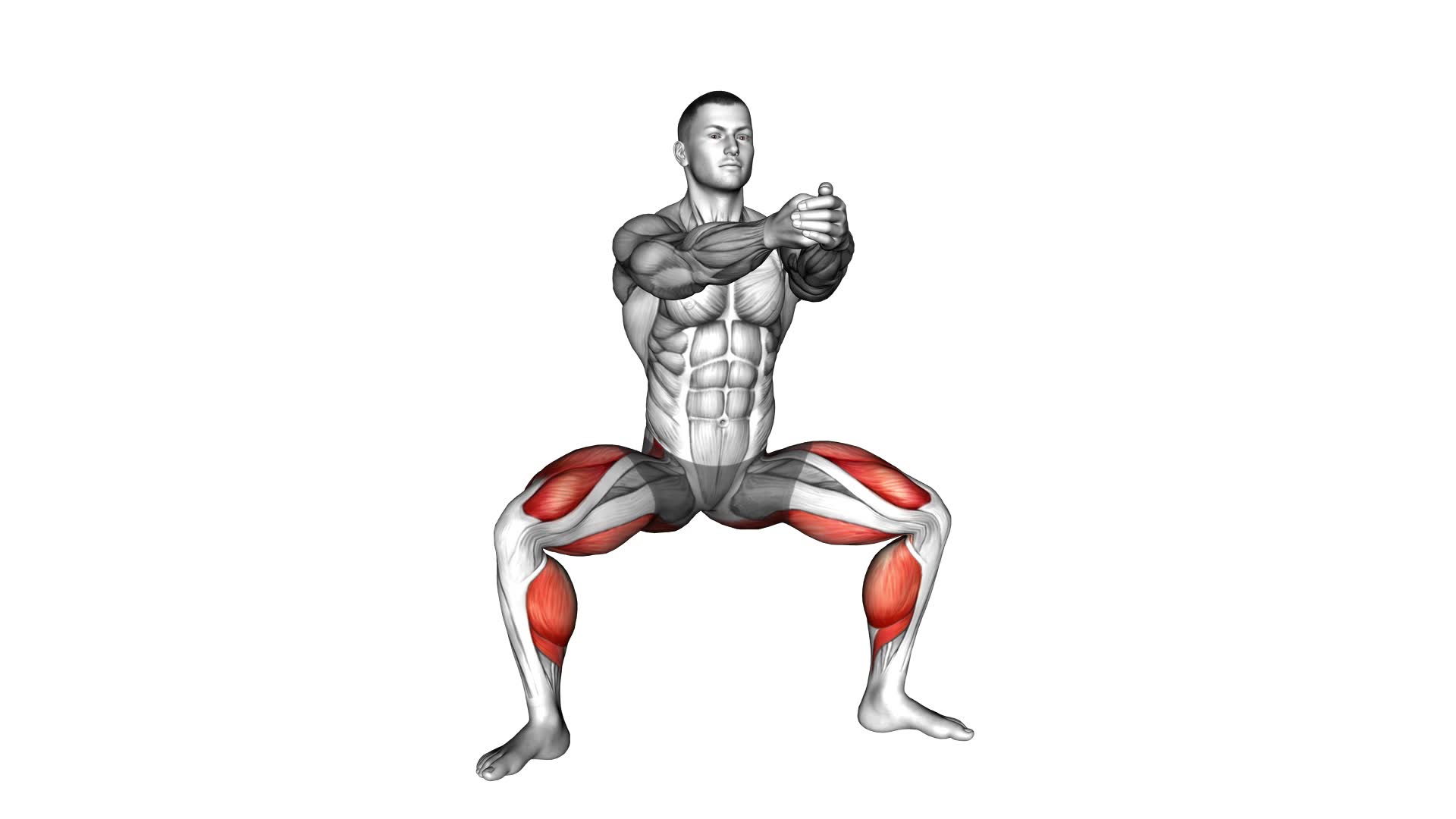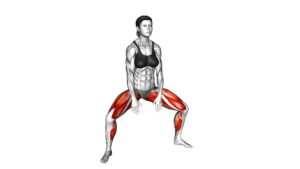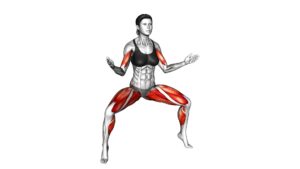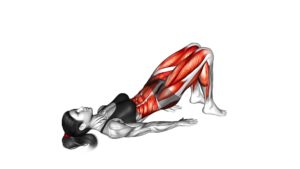Squat Tip Toe – Video Exercise Guide & Tips

Get ready to take your squats to the next level with the Squat Tip Toe! This exercise targets your lower body, helping you build strength and stability.
Watch This Exercise Video
In this video exercise guide, you'll learn the proper form and technique, as well as common mistakes to avoid. With variations and progressions, you can challenge yourself and see amazing results.
So, grab your mat and get ready to squat like never before!
Key Takeaways
- The Squat Tip Toe targets lower body muscles such as quadriceps, hamstrings, and glutes.
- It helps to increase lower body strength and tone over time.
- The exercise improves balance and stability.
- Proper form and technique, including maintaining core engagement and alignment, are crucial for maximizing results.
Benefits of the Squat Tip Toe
You can experience increased lower body strength and improved balance by incorporating the Squat Tip Toe into your workout routine. This exercise offers a range of benefits for your lower body, making it an excellent addition to any fitness regimen.
One of the primary advantages is the development of leg muscles, including the quadriceps, hamstrings, and glutes. As you squat down and rise up onto your tiptoes, you engage these muscles, leading to increased strength and tone over time.
Additionally, the Squat Tip Toe helps to improve balance and stability. By challenging your core and lower body, this exercise enhances your ability to maintain proper alignment and control your movements. This is particularly beneficial for athletes, as well as individuals looking to prevent falls and injuries.
To maximize the benefits, it's important to perform the Squat Tip Toe with proper form and technique. By focusing on maintaining a neutral spine, keeping your knees aligned with your toes, and engaging your core, you can optimize the effectiveness of this exercise and minimize the risk of injury.
Proper Form and Technique
To ensure optimal results and minimize the risk of injury, it's crucial to maintain proper form and technique while performing the Squat Tip Toe exercise. Proper form not only helps you get the most out of the exercise but also reduces the risk of strain or injury to your muscles and joints.
When performing the Squat Tip Toe, it's important to start with your feet hip-width apart and your toes pointed slightly outward. As you lower into the squat, make sure to keep your knees aligned with your toes and your back straight. Engage your core muscles to maintain stability and balance throughout the movement.
To improve your balance, focus on keeping your weight centered over your heels and avoid leaning too far forward or backward. This will help you maintain stability and prevent any unnecessary strain on your ankles and knees.
In addition to balance, the Squat Tip Toe exercise also helps increase ankle mobility. As you rise up onto your tiptoes at the top of the movement, you're stretching and strengthening the muscles in your calves and ankles. This can improve your overall mobility and stability, making everyday activities easier and reducing the risk of ankle injuries.
Remember to always listen to your body and start with lighter weights or modifications if needed. As you become more comfortable with the exercise, you can gradually increase the intensity. By maintaining proper form and technique, you'll maximize the benefits of the Squat Tip Toe exercise while minimizing the risk of injury.
Common Mistakes to Avoid
Maintaining proper form and technique is crucial for optimal results and injury prevention when performing the Squat Tip Toe exercise. It's important to be aware of common mistakes to avoid.
One common mistake to avoid is rounding your back during the squat portion of the exercise. This can put excessive strain on your lower back and increase the risk of injury. Instead, focus on keeping your back straight and your core engaged throughout the movement.
Another mistake to avoid is allowing your knees to cave inwards as you squat. This can put stress on your knee joints and lead to imbalances in the muscles around the knees. To prevent this, actively push your knees outwards as you lower into the squat and keep them in line with your toes.
Additionally, make sure to avoid coming up onto your toes during the squat tip toe portion of the exercise. This can destabilize your balance and increase the risk of ankle sprains or other injuries. Instead, keep your weight evenly distributed through your feet, with your heels firmly planted on the ground.
Variations and Progressions
To progress and challenge yourself with the Squat Tip Toe exercise, incorporate variations into your routine. Here are some progression modifications and advanced variations to take your workout to the next level:
- Progression Modifications:
- Increase the range of motion by squatting deeper or holding the squat position for longer.
- Add resistance by using dumbbells or a weighted vest while performing the exercise.
- Advanced Variations:
- Single-leg Squat Tip Toe: Perform the exercise on one leg at a time to further engage your lower body muscles and improve balance and stability.
- Explosive Squat Tip Toe: Instead of slowly rising onto your toes, explode upward with power, using your leg muscles to propel yourself into the air. Land softly and repeat.
By incorporating these progression modifications and advanced variations, you can continue challenging your muscles and improving your strength and stability.
Remember to always maintain proper form and listen to your body to avoid injury. Gradually increase the intensity and difficulty of the exercise as you become more comfortable and confident.
Keep pushing yourself and enjoy the benefits of the Squat Tip Toe exercise.
Tips for Maximizing Results
To maximize your results with the Squat Tip Toe exercise, follow these tips.
First and foremost, staying motivated is key to achieving your fitness goals. Find what drives you and remind yourself of it regularly. Whether it's wanting to improve your strength, lose weight, or simply feel better, keeping your goals in mind will help you stay committed to your workout routine.
In addition to staying motivated, it's essential to prioritize rest and recovery. Your body needs time to repair and rebuild after intense workouts. Incorporate rest days into your exercise schedule and listen to your body's cues. If you feel overly fatigued or experience muscle soreness, take a break and allow yourself time to recover. This won't only prevent injuries but also ensure that you're able to perform at your best during your workouts.
Frequently Asked Questions
How Many Sets and Reps Should I Do When Performing the Squat Tip Toe Exercise?
When performing the squat tip toe exercise, it's important to focus on proper form and technique.
Start by standing with your feet shoulder-width apart, then squat down as low as you can while keeping your heels on the ground.
As you come up, rise onto your tiptoes for an extra challenge.
As for sets and reps, aim for 3-4 sets of 10-12 reps to build strength and endurance.
Remember to listen to your body and adjust as needed.
Can I Do the Squat Tip Toe Exercise if I Have Knee or Ankle Injuries?
If you have knee or ankle injuries, it's important to modify the squat tip toe exercise to avoid further damage. Consult with a healthcare professional or physical therapist for specific modifications that suit your condition.
However, keep in mind that the squat tip toe exercise can be beneficial for overall leg strength when performed correctly. It targets the muscles in your legs, including your quadriceps, hamstrings, and calves, helping to improve stability and balance.
What Muscles Does the Squat Tip Toe Exercise Target?
The squat tip toe exercise targets multiple muscles in your lower body. It primarily works your quadriceps, hamstrings, and glutes, helping to strengthen and tone these areas. Additionally, it engages your calf muscles as you rise up onto your tiptoes during the exercise.
Performing the squat tip toe exercise with proper form can improve your balance, stability, and overall lower body strength.
How Often Should I Include the Squat Tip Toe Exercise in My Workout Routine?
To maximize the benefits of adding the squat tip toe exercise to your routine, consider the frequency. How often should you include it? Well, incorporating this exercise two to three times a week can be ideal.
By doing so, you'll target and strengthen various muscles, such as the quadriceps, hamstrings, glutes, and calves.
This exercise also improves balance and stability. So, make sure to find the right balance in your workout routine and reap the rewards of the squat tip toe exercise.
Are There Any Modifications or Alternatives for Individuals Who Find the Squat Tip Toe Exercise Challenging?
If you find the squat tip toe exercise challenging, there are modifications and alternatives available.
You can try doing regular squats without going up on your toes or perform a modified version by using a chair for support.
Another alternative is to do calf raises or standing heel raises to work on strengthening your calf muscles.
It's important to listen to your body and choose the modification or alternative that works best for you.
Conclusion
In conclusion, incorporating the squat tip toe exercise into your workout routine can provide numerous benefits. This includes strengthening your leg muscles, improving balance, and enhancing overall lower body stability.
By maintaining proper form and technique, avoiding common mistakes, and gradually progressing in difficulty, you can maximize the results of this exercise.
Remember to consult with a professional trainer or fitness expert to ensure you're performing the squat tip toe correctly and safely.

Author
Years ago, the spark of my life’s passion ignited in my mind the moment I stepped into the local gym for the first time. The inaugural bead of perspiration, the initial endeavor, the very first surge of endorphins, and a sense of pride that washed over me post-workout marked the beginning of my deep-seated interest in strength sports, fitness, and sports nutrition. This very curiosity blossomed rapidly into a profound fascination, propelling me to earn a Master’s degree in Physical Education from the Academy of Physical Education in Krakow, followed by a Sports Manager diploma from the Jagiellonian University. My journey of growth led me to gain more specialized qualifications, such as being a certified personal trainer with a focus on sports dietetics, a lifeguard, and an instructor for wellness and corrective gymnastics. Theoretical knowledge paired seamlessly with practical experience, reinforcing my belief that the transformation of individuals under my guidance was also a reflection of my personal growth. This belief holds true even today. Each day, I strive to push the boundaries and explore new realms. These realms gently elevate me to greater heights. The unique combination of passion for my field and the continuous quest for growth fuels my drive to break new ground.







